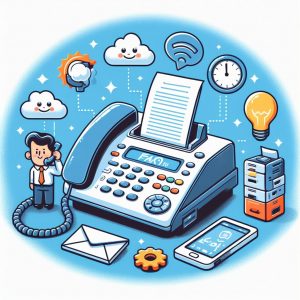I. Introduction
Explanation of VoIP and its benefits
VoIP or Voice over Internet Protocol refers to technologies that allow voice calls to be made over internet data networks instead of dedicated phone lines. VoIP converts analog voice signals into digital data packets that are transmitted over the internet.
Key benefits of switching to VoIP for businesses include:
- Cost savings – Routing calls over the internet avoids long distance and interconnect fees charged by traditional telephone networks. Shared IP infrastructure is less expensive.
- Unified communications – VoIP allows bringing together voice, video conferencing, instant messaging, mobility solutions on one platform.
- Increased mobility – Software VoIP clients allow connecting laptops and mobile devices to the business phone system from anywhere.
- Flexibility – It’s easy to add, remove or transfer lines, and add features with just software changes. No new wiring needed.
- Advanced capabilities – VoIP enables intelligent call routing, auto-attendants, interactive voice response, call analytics and more.
Importance of fax in certain industries
While VoIP adoption has accelerated rapidly, faxing remains crucial for certain industries that rely on fax for legal documentation, healthcare records, invoices and more. Industries that still depend heavily on fax include:
- Legal – Law firms send and receive legal filings, court documents via fax daily.
- Healthcare – Patient records, lab reports, prescriptions often transmitted by fax.
- Banking – Applications, contracts and other financial documents routinely sent by fax.
- Mortgage – Loan applications, bank statements and approval documents need faxing.
- Government – Fax still used for official communications in government.
Ensuring reliable fax capabilities remains vital even when updating communications infrastructure to VoIP across these industries.

II. Challenges of Faxing over VoIP
While VoIP brings tremendous benefits, faxing with VoIP networks poses some specific challenges including:
Sensitivity to delay variation in the audio path
Fax transmissions rely on constant smooth audio frequencies to transmit data reliably. Packet networks can sometimes encounter jitter which is variations in latency. This jitter disrupts the steady audio frequencies needed for clean fax transmissions.
Even small variations in network delays can severely impact fax completeness. As a real-time transmission method, faxing has little tolerance for jitter and fluctuating network conditions compared to other types of data.
Incompatibility of fax machines with VoIP lines
Most traditional fax machines are designed to work via built-in modulation/demodulation transmitting over analog phone lines. They do not natively work when directly connected to digital VoIP lines which use packet-switching instead.
This creates incompatibility issues since the fax modem fails to establish connections, receive handshaking signals and transmit data properly over the VoIP line’s digital packets.
Limitations of Fax over IP services
Some hosted FoIP providers convert received faxes into PDF documents. But for legal and compliance needs, industries like healthcare and finance need the actual fax document with its ink signatures, letterheads, footers preserved intact with full fidelity.
Also, simpler FoIP services lack enterprise-grade security, quality of service guarantees, reliability capabilities and configurability required by organizations that depend heavily on fax.

III. Solutions for Faxing over VoIP
Fortunately there are some effective solutions available for organizations to overcome the challenges and integrate fax machines with VoIP phone systems:
Analog Telephone Adapter (ATA)
A basic solution is to use an analog telephone adapter (ATA). This device converts the analog fax signal into the digital data packets required for transmission over the IP network.
The ATA acts as the bridge allowing the fax machine to connect to the VoIP phone line. It handles the codec modulation and packetization process while also providing dial tone to the fax device.
T.38 protocol for sending faxes over the Internet
T.38 is an ITU standard protocol that defines how real-time Group 3 fax transmissions can be supported over IP networks.
VoIP providers that support T.38 can enable their customers to continue sending and receiving faxes reliably after transitioning to VoIP lines. T.38 provides advanced capabilities to optimize faxing over IP.
FoIP solutions for adapting fax technology to be used over VoIP
Dedicated enterprise-grade fax servers provide fax over IP capability while overcoming the challenges of faxing over VoIP networks. These solutions adapt fax transmissions to work properly over the IP environment.
Enterprise FoIP servers integrate tightly with PBX systems while giving administrators control over fax settings and configurations for optimal performance and compliance.
IV. Best Practices for Connecting Faxes to IP Networks
To leverage the above solutions most effectively, businesses should follow best practices when integrating fax machines with VoIP:
Integration of fax machines into VoIP networks
It’s recommended to use analog telephone adapters or fax over IP servers purpose-built for faxing when connecting fax machines to VoIP networks. This properly handles conversion of the fax signal for reliable transmission over IP.
Disabling error correction mechanisms
Most traditional fax machines rely on error correction protocols. However, these mechanisms are designed for analog lines and can worsen transmission issues over VoIP’s packet-based networks. Where possible, disable error correction when transmitting over IP.
Maintaining an analog line and traditional fax machine for reliable and consistent faxing
For industries that require highly reliable and compliance-grade faxing, best practice is to maintain legacy analog phone lines just for your physical fax machines. This leaves an always-available fax solution unaffected by VoIP network traffic or jitter.
Additional best practices for faxing over VoIP include:
- Using high-quality low compression codecs like G.711 to preserve fax signal quality.
- Implementing Quality of Service policies that prioritize fax traffic on VoIP networks.
- Careful network design and capacity planning to minimize latency and jitter.
- Following manufacturer guidelines for any fax over IP servers or adapters deployed.
V. Conclusion
Assessment of faxing needs to select the best option for businesses
The ideal fax over VoIP solution for any business depends on factors like required reliability, fax transmission frequency, compliance needs, infrastructure and budget.
Light fax users may do fine with analog telephone adapters while heavy faxing loads demand enterprise-grade FoIP servers with advanced monitoring and quality of service.
Importance of reliable and consistent faxing in certain industries
For legal, healthcare, government and other industries that depend heavily on faxes, maintaining reliability and integrity is crucial when transmitting documents like medical records or legal filings.
In these cases, maintaining legacy analog phone lines solely dedicated for physical fax machines may be the optimal hybrid solution even when the rest of communications move to VoIP.
Overall, integrating faxes with VoIP networks is achievable with the right solutions tailored to each organization’s specific requirements. Careful planning ensures VoIP can support the continued need for reliable fax communications even as infrastructure evolves.
